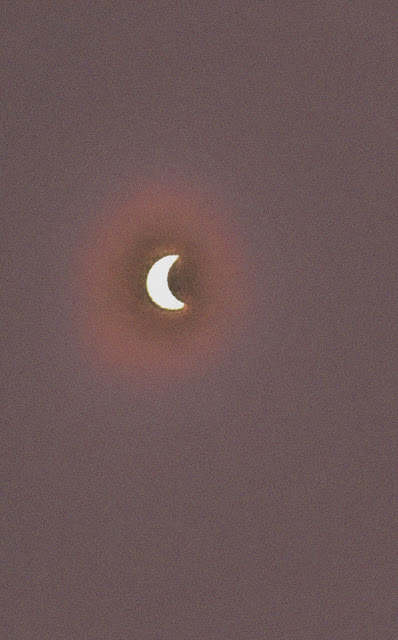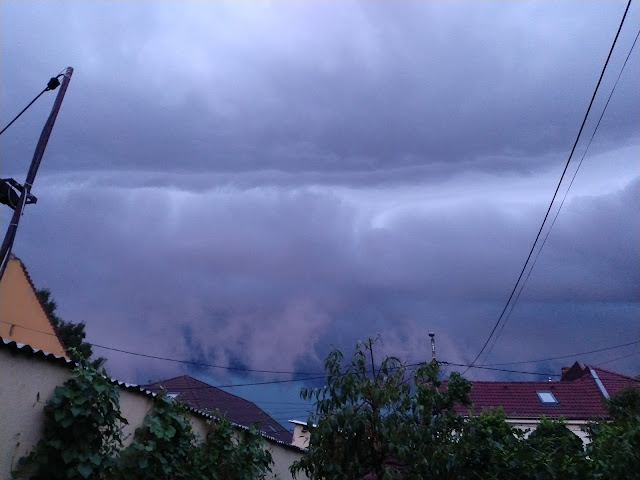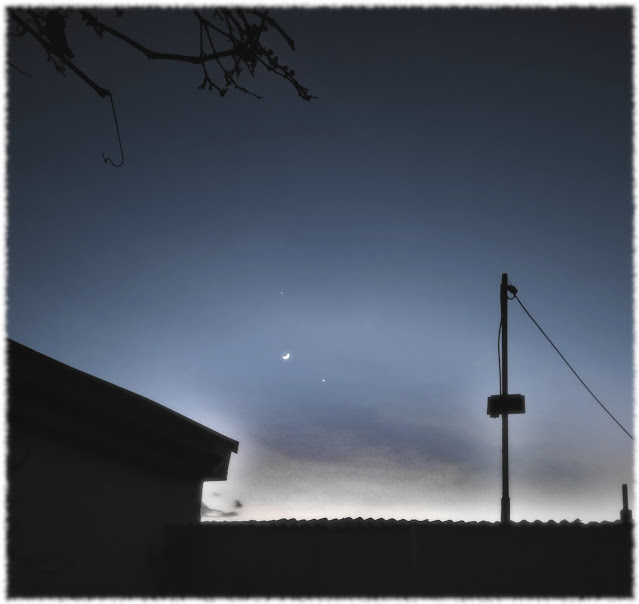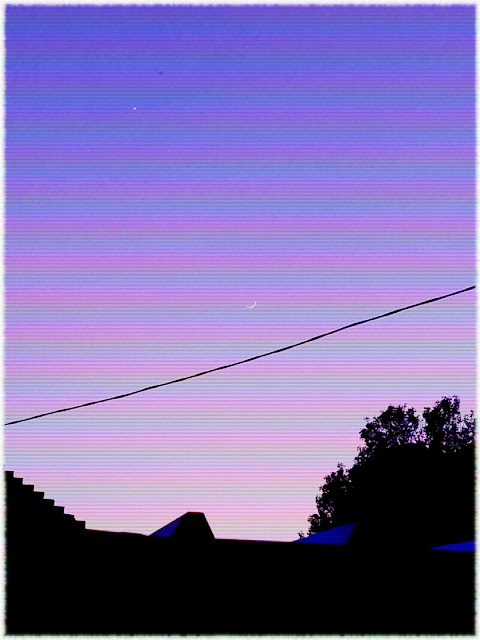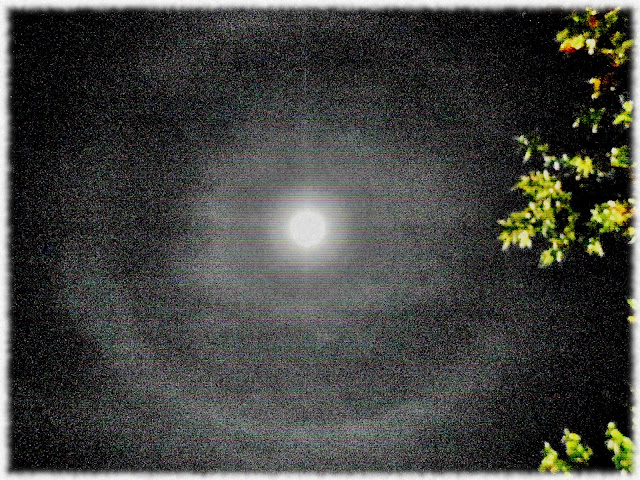 |
Charles Messier
portret de Nicolas Anseaume, 1771 |
Ma aflu undeva aproape de finalul lecturii reviziei
Catalogului Messier, facuta de catre Camille Flammarion si echipa ''Société
astronomique de France/ SAF'' a acelor vremuri.
Vremuri grele, cumplite, deoarece revizia s-a intamplat in
timpul Primului Razboi Mondial. Activitatea SAF pe aceasta tema a durat mai
multi ani si a intampinat multe dificultati : spre sfarsit, lipseau cam de
toate, de la hartie pana la tipografii
priceputi in meseria lor, ce sa mai vorbim de gravorii care trebuiau sa
transfere pe hartie delicatele fotografii si desene de nebuloase.
In intregul ei, revizia a fost o actiune superba si pentru
care aprecierea ca ''succes'' ar fi o nemeritata subapreciere. Este insa prea putin cunoscuta in lumea larga unde se
considera ca cercetarea obiectelor Cerului Profund ( Ciel Profond / Deep Sky/
Mély Ég ) este legata mai ales de astronomii de limba engleza care ar fi
initiat-o. Ori, cel putin pentru obiectele Catalogului Messier (plus inca alte
17 obiecte), Flammarion studiaza istoria observatiilor pana la Aristotel despre
care credea ca ar fi efectuat, la roiul deschis M 41, prima adevarata
observatie de acest gen.
Dar sa-l lasam pe Flam si harnica sa echipa ...
 |
Dobsonianul D= 125mm F/ 7, instrumentul primului Tur Messier, vedere partiala
( nu stiu de ce mi se tot baga in poze moshul asta !? ) |
Aceasta lectura mi-a pus cateva intrebari si mi-a redeschis
apetitul pentru reobservarea ''prin forte proprii'' a tuturor obiectelor din
Catalogul Messier. Chiar si primul meu proiect , realizat candva prin 2017- 2018 ( de verificat in jurnal ), imi pare acum, dupa lecturarea lui Flammarion, ca a
fost o actiune grabita.
De data aceasta nu voi mai tropai la ocular de nerabdare, ci, asa cum am invatat de la marele maiestru, voi studia in tihna obiectele, le voi
desena pe cele care pot fi desenate , voi studia despre insusirile lor.
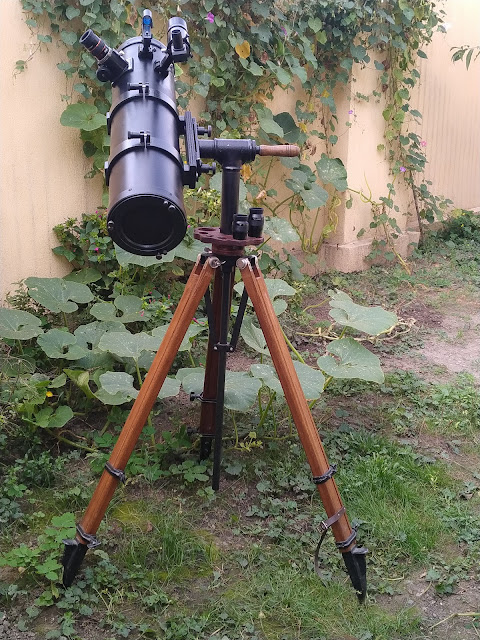 |
Newtonianul D= 148mm F/ 5, pe montura ''Penelopa''
echipat cu ocularul XCel 25mm
si cautatoare RACI 8x50mm+ RDF |
Telescopul pe care intentionez sa-l folosesc la majoritatea
obiectelor este noul meu reflector newtonian cu apertura D= 148mm si focala F = 752mm.
El s-a nascut ca un bastard ingrozitor de deformat mecanic si , mai ales, din
punct de vedere optic. ''Parintii'' morali ai acestui gest ''telescopicid''
vorbesc zilnic germana, participa probabil la OktoberFest si tin cu Bayern
Munchen. Habar n-am daca cele amintite mai exista sau s-or fi globalizat si ele precum
productia de telescoape in care Germania obisnuia sa fie ''fruncea'' nu coada ( sau ce-o mai fi ramas pe sub ea).
De produs, telescopul a fost produs in RPC dar
asta trebuie sa fie clar: chinezii fac ceea ce li se comanda. Daca dealerul
european comanda telescop de 1000 verzisori, ei pe acela il fac. Dar daca daca
halitorul de kremwurst se zgarceste si comanda telescop de un dolar, ei pe
acesta il construiesc.
( Ca nu le plac numai kremwurst ci mai sunt si lacomi peste
masura. )
Nu am sa insist aici asupra detaliilor. Am sa spun doar ca din vechiul telescop a
ramas doar barilletul oglinzii principale si inelul de rigidizare de la capatul
superior al tubului, modificate insa si acestea. Cu noua oglinda primara ''Sky Watcher'', cu secundara si cu intreaga
mecanica inlocuita, pus pe montura ''pipe'' - ''Penelopa'', telescopul se
comporta foarte bine, oferind o rezolutie pe stele duble de pana la 0,8''.
 |
Dobsonianul Toleascop D = 200 mm F/ 6,
cel care a completat si incheiat prima mea Tura Messier |
Nu va fi insa singurul instrument folosit. Nu degeaba M 74 a
primit numele de ''Galaxia Fantoma'' si, impreuna cu alte doua, trei obiecte au
fost observate in prima mea tura Messier abia cu dobsonianul D= 200mm, scos sub cerul dinafara Aradului.
Proiectul a fost deja demarat in Decembrie 2023. Desi nu a fost primul obiect observat , roiul deschis M79 a fost unul dintre primele obiecte observate si desenate.
Roiul stelar sferic
M79 in Lepus/ Iepurele :
In seara observatiei, Vineri 15 Decembrie 2023, cerul a fost
paclos iar aerul, la nivelul solului, plin de umiditate .
Am folosit ocularele si grosismentele : XCel 25mm / 30x + TS
7mm UWA / 107x + Radian 3mm/ 250x.
Am gasit roiul foarte usor la 30x , la Est de steaua tripla
HJ 3752 unde AB are separatia = 3,5'' si AC= 60''. AC a fost separata cu usurinta dar, in seara
observatiei, AB a fost doar rezolvata ( cu greu ) la 107x.
Steaua primara mi s-a parut a fi oranj desi
StelleDoppie spune ca este o stea galbena clasa spectrala G0, deci mai fierbinte
decat Soarele care este in clasa G2.
Am rezolvat si separat AB la reobservarea de Luni 18
Decembrie.
 |
| M 79 la 250x / Radian 3mm |
M79 este incadrat la Nord de o * 9,4mv iar la
Sud de o * 8,8mv.
M79 s-a vazut ca un obiect cetos, de forma circulara, avand mai luminoasa o treime din partea centrala. Centrul acestei zone luminoase devine
brusc luminos, fara a lua insa aspect stelar.
Partea roiului, situata inafara treimii luminoase, are
aspectul unui halou foarte slab luminos. Nu am remarcat detalii in interiorul
acestor trei zone sau asimetrii ale lor.
Diametrul roiului, incluzand partea de halou slab luminos,
se vedea egal cu a cincea parte din raza campului vizual al ocularului TS 7mm UWA.
Aceasta inseamna un diametru intre 4 si 5 minute de arc.
La 250x/ Radian 3mm, o stea de magnitudinea 11,48 se vedea spre Est, la 4/5 din raza
campului iar spre Nord, una de 12,2 mv si aflata la 1/5 din raza campului.
M79 si * N 12,2 mv formeaza baza unui asterism triunghi isoscel
foarte ascutit, cu varful in * E 11,48 mv.
La scrierea acestor note am avut placerea sa aflu ca in acea seara, am facut cunostinta cu stelele tip AGB, adica ''asymptotic giant branch'' = ''bratul/ ramura/clasa gigantelor asimptotice''.
Steaua Cl* NGC 1904 SH H de 12,2 mv este de fapt o stea gigant trecuta de aceasta faza de evolutie stelara. Are in fata ei o moarte rapida, cu durata undeva intre zece si o suta de milenii. Asta parca o umanizeaza, asa ceva parca mai putem intelege ... sarmana stea.
Roiul M79 insa nu a fost rezolvat in stele de catre
reflectorul de 148mm; nici macar partial, la nici una dintre observatiile de pana la scrierea acestei note.
Datorita altitudinii joase si a cerului paclos de la
momentul observatiei, schita mea a rezultat incompleta in stele de fundal.
Faptul ca am avut dificultati in identificarea celor doua stele,
reprezentate in desen, confirma conditiile dificile de observatie.
De asemenea valorile publicate ale diametrului lui M79
oscileaza in jurul valorii de 9 minute de arc. Ori eu am vazut obiectul la un
diametru de , sa zicem, 4 sau 5 minute de arc.
Asadar, cand voi avea alte ocazii, voi relua aceasta
observatie.
 |
| M 79, schita bruta de la ocular |
Am atasat mai sus schita bruta de la ocular si pe cea electronica mai jos. Aceasta incearca sa prezinte impactul vizual al roiului sferic M79, vazut la 250x, prin
newtonianul meu de 148mm. Am incercat sa ''introduc in ecuatie'' si conditiile
atmosferice. La executarea desenelor electronice, am folosit softurile GIMP si Paint.
 |
| M79, desenul electronic, fara etichete |

